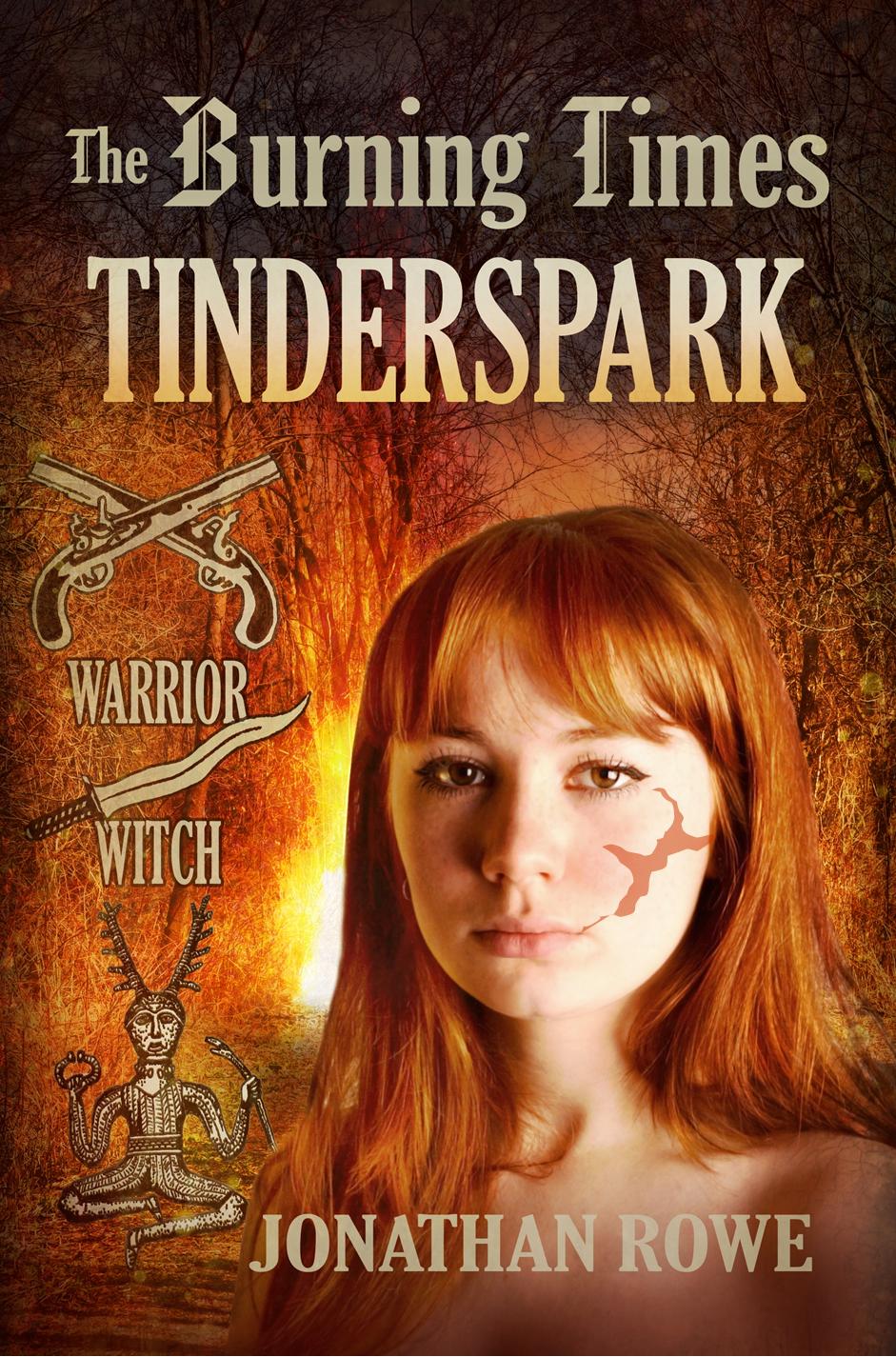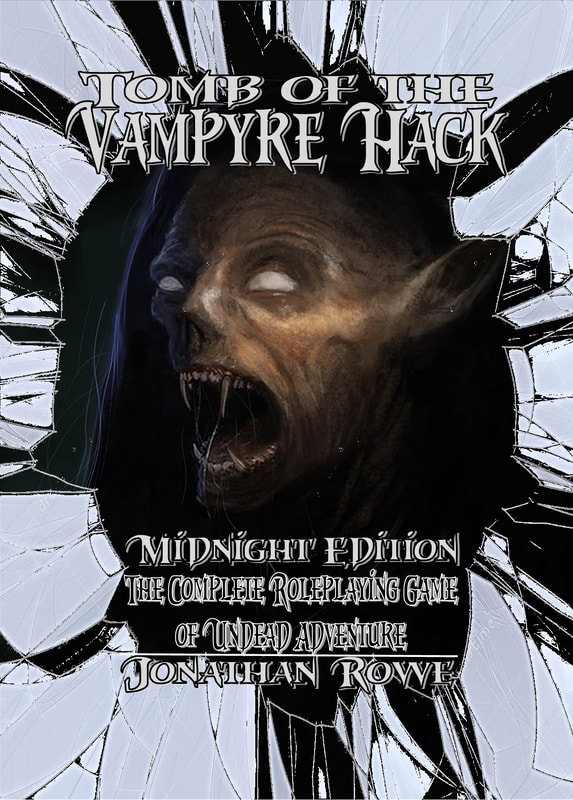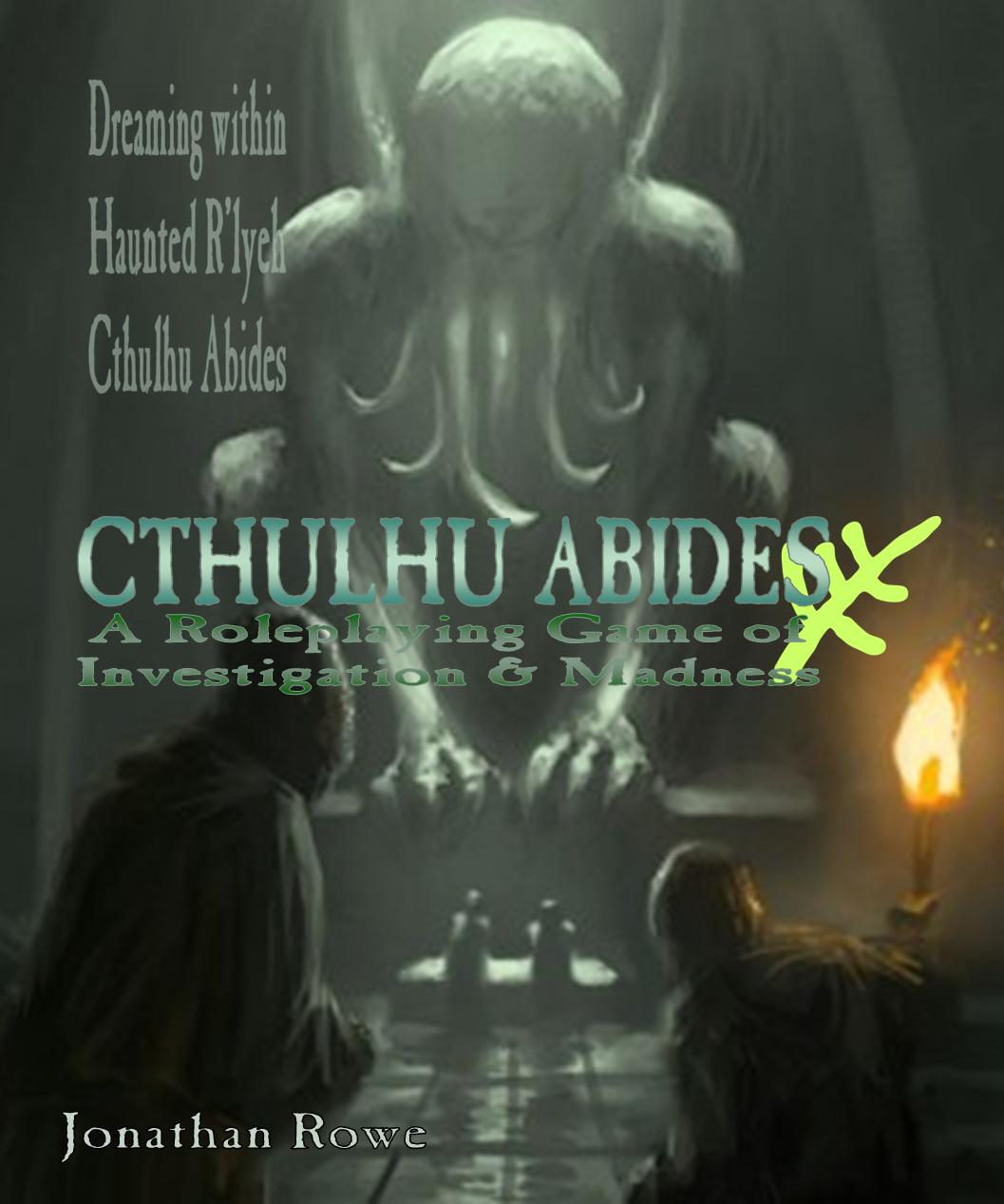|
Back in the early-1980s, White Dwarf became the premier magazine for the roleplaying hobby. In America, Dragon reigned supreme in its support for D&D, but White Dwarf covered the whole hobby (more or less) and was unequalled for the quality of its journalism and contributions. There really were some fantastic scenarios for D&D and Runequest in particular, a brilliant column by Andy Slack supporting Traveller, a bestiary feature that inspired most of the AD&D Fiend Folio and great articles on campaign design generally. My favourite issue of White Dwarf (24) and the Fiend Folio, a sequel to the AD&D Monster Manual containing a mixture of monsters from TSR modules and the pages of White Dwarf. All things must come to an end and as White Dwarf moved into its 50s (in 1984) there was a perceptible dip in the imaginative temperature. Don't get me wrong: there were still some cracking scenarios to be published and most issues had a solid article or two, but it stopped being groundbreaking. The RPG companies were getting into gear supporting their own products with increasingly thoughtful modules and campaign settings. There was just less for a magazine like White Dwarf to do. Perhaps also, less consensus in the hobby over who it was primarily for. Ultimately, White Dwarf would turn into a showcase for Games Workshop's own products, but that was still a few years down the line. There was life in the old dog yet. One promising sign of continuing relevancy was a trend for scenarios for a new RPG: Chaosium's Call of Cthulhu, now a mighty industry behemoth but then a quirky outlier in the gaming constellation, pitching a roleplaying experience of dread, futility and, ultimately, madness and death in the world of H P Lovecraft's distinctive American Gothic. Call Of Cthulhu had been reviewed back in White Dwarf 32 (1982), with reviewer Ian Bailey clearly as impressed by the game as he was perplexed by how to make use of it (a common response at the time). He also observed that the game was "U.S. orientated and consequently any Keeper ... who wants to set his game in the UK will have a lot of research to do." The original Call Of Cthulhu RPG (the best cover too) and the White Dwarf issue that reviewed it - along with an excerpt from Ian Bailey's review Of course, since this was the Golden Age Of White Dwarf, it only took 10 issues for hobby maestro Marcus L Rowland to appear in the magazine, offering 'Cthulhu Now! - Call of Cthulhu in the 1980s.' The article grounds itself in an early '80s setting with an illustration of a punk studying a Job Centre noticeboard while a tentacled gribbly writhes up behind him! A follow-on article offered three contemporary scenarios: Dial 'H' for Horror, Trail of the Loathsome Slime, and Cthulhu Now! This opened the floodgates for White Dwarf contributors to submit a range of Call of Cthulhu material, including Cthulhu in space (The Last Log, by Jon Sutherland, Steve Williams and Tim Hall, from issue 56 in 1984) as well as Cthulhu in rural 1930s England (The Watchers of Walberswick by Jon Sutherland, from issue 50 in 1984) and Cthulhu in British Mandate Palestine (The Bleeding Stone of Iphtah by Steve Williams and Jon Sutherland, from issue 60 in 1984) . You'll notice Sutherland's name recurring? He was quite prolific in 1984! These early scenarios are typical for White Dwarf: they are concise but erudite, with a close attention to period and setting; they are thoughtful affairs, far removed from the pulpy excesses of Chaosium's own globetrotting campaign packs (like the epic Masks of Nyarlathotep, also from 1984 and closer in tone to a Bond movie than a Lovecraft story - a really good Bond movie spliced with Indiana Jones but pretty far from Lovecraft's cerebral interests). I suppose Jon Sutherland's efforts were attempts to take Call Of Cthulhu by the horns and deliver a narrative experience that feels like it really could be a horror short story by Lovecraft himself: very low-key but also, whatever their ostensible setting, very British. All this preamble is the context for me blowing the dust off White Dwarf #60 to run Sutherland's The Bleeding Stone of Iphtah on a group of three players over two evening sessions. Why pick this scenario? Well, it was used as the final scenario in the 1984 Games Day official Call of Cthulhu Competition and the introduction boasts that it provides "an interesting one-off session or addition to an existing campaign" - which sounds ideal for my needs. Next, the question of which rules set to use? That might sound odd, but post-CoC rules have proliferated recently and my respect for Sandy Peterson's imaginative achievement with Call of Cthulhu is only matched by my distaste for CoC's rules themselves, which are Chaosium's Basic Roleplaying system, with the addition of a diminishing Sanity (SAN) stat that spirals down to nothing as the Elder Nasties emerge. Lots of skills expressed as percentages, professions defined by skills and a lumbering combat system that manages to simultaneously make player characters too flimsy (any Mythos monster will squish them) and too tough (you have to shoot or stab someone several times before they fall down). The two contenders to replace CoC are Paul Baldowski's The Cthulhu Hack and Joseph D Salvador's Eldritch Tales. You can find both on drivethrurpg, but Cthulhu Hack is also available from the nice people at Zatu I've written about Baldowski's Cthulhu Hack before and, like most Hack games, it's great for pick-up-and-play. There are only two problems. One is that it tends more towards the pulpy action-adventure side of the CoC congregation and the other thing is that its Hack-derived mechanics don't greatly resemble classic CoC at all; both are problems for adapting the reserved tone and low-key assumptions of Sutherland's CoC scenarios. No, Salvador's game is the one I choose for this. For those who don't know it, it bills itself as Lovecraftian White Box Roleplaying. This means it takes the bare rules and conventions of Original D&D, especially the iteration known as White Box: Fantastic Medieval Adventure Game by Charlie Mason. Now, I fell in love with White Box when I attempted a long D&D-style campaign during 2020's Lockdown, so I'm excited by this. Mason's White Box is free (FREE!) on drivethruprg but a physical copy is stupidly cheap on Amazon too Eldritch Tales is a beautifully presented indie RPG product with evocative (and pleasingly amateur-style) art, fantastic layout, a delightful overview of the Lovecraftian milieu and careful explication of the (essentially simple) rules. Only the presence of a much-needed index would complete my bliss! The game invites you to create characters by rolling 3d6 for the classic six characteristics (Strength, Dexterity, Wisdom, etc.). Non-combat 'Feats' are attempted by rolling a d6 and you succeed on a 6 if your relevant characteristic is low (6 or less), on a 5-6 with ordinary characteristics and on a 4-6 of your relevant characteristic is 15+. Having a particular skill either adds +1 or +2 to the roll or lets you roll twice, choosing the best score - or sometimes both. So much better than faffing around with percentage dice. There are four character classes: Antiquarians, Combatants, Opportunists and Socialites. Within your broad class, you also roll or choose an Occupation that might give you particular skills, funds or possessions. Your Character Class gives you a d6 Hit points at first level (d6+1 for those hardy Combatants). Most weapons do a d6 damage (d6-1 for a thrown knife, d6+2 for a shotgun). Yes, every exchange of violence is potentially life-ending, especially as going up a level usually adds just +1 to your Hit Points. The levels only go up to 6th by the way. I think if your investigator gets to 6th level (with usually 3d6+1 HP), you should interpret that as the universe telling you not to push your luck any further. Insanity is a score that goes up during nerve-wracking encounters. If it ever gets to the level of half your Wisdom you gain a permanent insanity and if it ever matches your Wisdom you become a gibbering NPC. There are short-term shocks for people who fumble their Insanity saving throws (roughly 10% of the time) or gain 3 Insanity in one go (not that uncommon either once gibbous entities come calling). Two nice features of Eldritch Tales are the tables to roll up your Contacts (you have quite a few of these) and the table to roll up your Character Relationships. There are 20 of these suggestions, ranging from 'You are in love with another character (or their spouse or sibling)' through to 'You and another character witnessed something astounding.' These are so helpful for turning a bunch of numbers on paper into a team of investigators ready to risk life and sanity to investigate eldritch mysteries together. Past that point, Eldritch Tales is old-skool D&D: you roll saving throws and roll to hit Armour Class, there are familiar spells and monsters from the Mythos, you gain experience points from defeating the monsters or solving mysteries, you go up levels. The Bleeding Stone of Iphtah by Jon SutherlandThe scenario kicks off in Jerusalem in the 1920s, a time when the Palestine Mandate was overseen by the British Empire. It's a fantastic setting to launch any story - so good in fact that Kenneth Branagh (clearly also a fan of '80s White Dwarf) stole the idea to begin his recent film of Murder On The Orient Express. The PCs are Percy Goodfeather, a Gentleman Socialite who is searching for his vanished sister Darcy. He brings with him his university friend Howard Harris, an Australian Occultist Antiquarian: the two bonded when another friend disappeared, never to be seen again, during one of Howie's rituals in the college rooms. Percy's largesse helps fund Howie's growing drug addiction. They have been brought to Palestine by Joe Birdwell, an Opportunist Outdoorsman who knows the region and its peoples. Birdwell is secretly in love with Darcy Goodfeather, but he knew her as Dahlila de Gul, a torch singer and medium; he was an enthusiastic participant in her demimonde orgies until her strange disappearance. He has tracked her to Jerusalem, but not told Percy of his sister's double life. What's Going On? Actually, none of this is in Sutherland's scenario; these are incidents derived from Eldritch Tales' table of relationships and a few Tarot card draws to help brainstorm a plot. But I can tie it together
Start With Action The scenario starts with the PCs browsing a museum in Jerusalem when they are approached by a shifty Turkish gentleman named Lakey who wants them to take on a job for his boss, a businessman named Lotto who owns the Domino Club and is obsessed with antiquities. This is a run-of-the-mill CoC plot hook and the two NPCs are a delightful hommage to Peter Lorre's Ugarte and Sydney Greenstreet's Ferrari from Casablanca (1942). The sweaty grifter and the intimidating black marketeer Except that being led by the hand by a bunch of NPCs to a patron who explains why they have to go to a dig site in the Judean Mountains and chivvy along an archaeologist called Foster who has promised to bring back treasures for Lotto but has so far turned up nothing ... well, that's a slow start my friends. So instead we have Joe Birdwell see Darcy pass by in the street - and he jumps out of the window to give chase. Darcy is being stalked by dangerous looking Bedouins but when Joe reaches her she reacts without recognition. One of the Bedouins fires a gun at Darcy, but Joe is hit and Darcy takes off in a car while the street erupts in confusion. Percy and Howie arrive to find an Arab doctor treating Joe and warning them that the Bedouins were tribesmen or a cult called Pachalim (made up name but it'll fly) and very dangerous customers. A Side Plot Develops The PCs are supposed to take the job from Lotto and journey to the dig site at Iphtah, but my ad libbed side plot has taken over the story. Joe goes to find out more about the Pachalim from a contact - an Arab businesswoman nicknamed 'the Ibis' (for her pronounced nose). This vociferous widow with her melodramatic flights of insulting rhetoric quickly becomes one of my most beloved NPCs! Joe parries and feints and handles her beautifully and ends up shadowing a pair of Pachalim goons as they invade the seedy guest house where Darcy is staying. Joe gets knocked out when he tries to intervene but, waking as a prisoner of the Pachalim, learns that they are trying to stop 'the Forgotten' (almansiayn) from carrying out a ritual. Yup, they're the good guys. Joe is released, doped up with hashish, and stumbles home to the Domino Club. Percy and Howie have been pulling their own contacts, find out a lot about Foster and discover that the local gangs that Lakey buys drugs from have acquired new weapons in the form of Rot spells that do horrific things to their victims. When the three PCs visit Darcy's guesthouse the next morning, they find Darcy has moved on, but one of the Pachalim is there, dead from a Rot spell, and clues point to Iphtah where Prof. Foster is digging. Yes, this is me trying to re-direct things because this side plot has taken up the evening and we haven't even arrived at the location of the actual scenario. Journey To Iphtah The main scenario takes place at the dig site at Iphtah, where Prof. Foster is going mad. The Professor is using opium to keep the Yithians out of his head, but he's run out of drugs and thinks that Lakey (his supplier) is holding out on him. The PCs get to snoop around the site, spy on the erratic Foster and realise strange things are afoot, but this is a programmed scenario where the PCs have to be onlookers to certain events and no amount of roleplaying or researching will speed them up. In the middle of the night, Foster murders Lakey to get at the drugs, then overdoses himself. The PCs manage to stop the truck escaping with Lakey's corpse by shooting out a tyre. They are left at the dig site with no Lakey, no Professor but a mysterious red stone - the Bleeding Stone of Iphtah. This is where it gets creepy, because a bunch of Dimensional Shamblers show up if anyone tries to remove the Stone from the site without performing the ritual. I hide the Shambles in an eerie dust cloud (for extra creeps) and use them as silent sentinels who murder the Arab labourers to establish their monster bona fides but otherwise leave the PCs to explore. There's a buried shrine to be found and opened and the Stone has to be 'bled' inside a pit to power up the ritual and then ... err .. and then ... ah, well, that's about it really. The PCs are free to leave. Perhaps suspecting that things could turn out rather anticlimactic, Jon Sutherland suggests a raid by snooping Bedouins and I've already set up the Pachalim for exactly this sort of work. The PCs end up stuck in the shrine with the Pachalim outside with rifles in a tense standoff. Then Howie the Antipodean Antiquarian leads the charge, shoots the Pachalim sheikh dead, but is riddled with bullets himself. Percy and Joe shoot their way to safety and the Shamblers disembowel the fleeing Pachalim. Percy and Joe get to leave the site, supervised by the silent Shamblers. And that's, kind of, where it ends. The scenario doesn't make it clear just how the ending is supposed to go down. My players decide to return the Stone to Lotto and continue their pursuit of Darcy. They are unaware of the role they have played in facilitating the arrival of the Yithians by performing the ritual. Evaluating the Scenario and Eldritch TalesThe Bleeding Stone of Iphtah is a rather slight affair. In fact, all of Jon Sutherland's 1984 scenarios are oddly muted. I think they were written in deliberate contrast to the gangbusters style of American CoC material, to be atmospheric, unsettling and cryptic, rather than kinetic, deadly and cosmic in scope. In all of them, the Mythos is a marginal force, largely operating off stage. The PCs spend most of their time exploring a realistic but evocative location, then at the very end there's a Mythos intrusion. The central problem is that there's no way for the PCs to understand the significance of what's been going on or their role in it. Now, in an ongoing campaign this is acceptable - further down the line, the PCs might uncover information which casts a revelatory light on the goings-on at Iphtah and realise that, by performing the ritual, they brought the Yithian-apocalypse a dread step closer. They might then understand why Foster was taking drugs and why the Shamblers appeared to stop them leaving with an un-bled Stone. But as things stand, there's no way to learn any of this - and this was a scenario, you will recall, billed as "an interesting one-off session or addition to an existing campaign." One wonders what the contestants at Games Day '84 made of it. I know some people will retort that Lovecraftian roleplaying is supposed to be mysterious and it's a good thing, not a bad thing, if a scenario leaves players puzzled and disquieted. Yes, that's true, I suppose, but my taste is more for a scenario that places the players in positions of at least partial knowledge. Too much of Iphtah was meaningful only for the GM, even with my improvisations. But these are minor gripes and I should perhaps essay another Sutherland scenario - perhaps the well-received Watchers At Walberswick - before forming a judgement on his output. Eldritch Tales served us very well and is now my go-to RPG rules set for Coc material. I was pretty generous in handing out experience points for roleplaying (and why not? the roleplaying was stellar!) and of the two characters who survived, Percy reached second level (losing some Insanity and gaining that precious extra Hit Point) with Joe just missing his level-up. I'd love to dust off a larger campaign pack - perhaps Shadows of Yog-Sothoth - to run using Eldritch Tales. However, I became very aware of how flimsy Eldritch Tales PCs are compared to CoC: every gunshot or knife wound is potentially lethal. Perhaps swashbuckling Cthulhu Hack would be a better fit for those pulp-y Chaosium campaigns? But for the studious and low-key Call Of Cthulhu scenarios that White Dwarf and Jon Sutherland were publishing in the mid-1980s, Eldritch Tales is ideal.
0 Comments
Do we really need another OSR fantasy roleplaying game? I mean, how many stripped-back, quirky, nostalgic homages to the golden age of tabletop RPGs (i.e. the early 1980s) can the market bear? Oh, all right then. Maybe just one more... Greg Saunders is the author of Warlock! and his game just oozes with love for a distinctively odd, low-key and punk-rock approach to fantasy storytelling. This isn't a high fantasy game of noble heroes on epic quests; no, it's a low-fantasy game of hoodlums with bad breath taking on missions of dubious morality for payment in pennies and stale crusts. Greg has nicely matched his minimalist rules set with striking B&W art (notably by Mustafa Bekir) that takes its inspiration from the fanzines and comic styles of the '80s, especially the Fighting Fantasy book series. This would make Warlock! worth purchasing just as a collector's piece - the new 'Traitor's Edition' is on drivethrurpg and the cover art is wonderful. You can find out more about Warlock! on Fire Ruby Design's website or Facebook page Beyond the aesthetics, Warlock! is worth picking up for another reason: it's a really good system with a distinctive design, rather than a now-typical retroclone of OD&D. Don't get me wrong: I love OD&D retroclones. I've posted before about my delight in Charlie Mason's White Box and Michael Thomas' BlueHolme games. But it's nice to see a game that doesn't start with 6 characteristics rolled on 3d6 and then offer a bunch of leveled character classes. Best Left Buried is a game that offers a novel (and rather subversive) take on old-skool dungeon-crawling by walking away from D&D and taking inspiration instead from Call Of Cthulhu's deteriorating Sanity mechanic. Warlock! does something similar, but its template seems to be Warhammer Fantasy Roleplay's early-Renaissance world with its focus on skills and progression through professions, rather than monolithic character classes but a slightly less gonzo and more mystical theme, perhaps inspired by Dragon Warriors. Enough context. Let's jump in. The Alternative to Hit PointsYou create your Warlock! character by rolling just two abilities: your Luck (d6+7) and Stamina (2d6+12). Stamina ticks down as you are injured - so it's Hit Points, right? Ah, but you get all your Stamina back after a sleep and half of it back after a short rest. This isn't like D&D, where your HP dwindles inexorably. If you survive a fight in Warlock!, you'll be right as rain half an hour later. The complication is Critical Hits. If you get knocked below zero Stamina, you pick up lasting injuries called Critical Effects and these don't go away so quickly. So even though you keep recovering your Stamina, the accumulation of Criticals can make your character non-functional quite quickly - and the worst Criticals will kill you outright. There's a set of entertaining Critical Hit Tables based around three weapon types (slicing, stabbing, bashing) and a fourth one for fire or magic ('blasting'). You make a simple d6 roll and add your negative Stamina to it, producing results that range from the icky ('That was my foot! Can only hobble for 1d6 days! Toes loose in boot!') to the gruesome ('Right in the kidney! Peeing blood! All tests at -5 penalty for 1d6 days') and a result of 10+ means you die (horribly). Another implication of this is that your Stamina increases over time, but only slightly. No one is cutting about with 100 Stamina. You'll be lucky if you ever get above 30. This is ideal for low-fantasy or grimdark gaming where everyone feels vulnerable all the time and every fight is a proposition you have to think twice about. Welcome to your Glamorous CareerNo 3d6 characterstics in Warlock! No Strength or Intelligence or Charisma. Instead, you have a list of 32 skills. Ten start at 6, ten at 5 and the other twelve all start at 4. The core mechanic in the game is a d20 roll, adding your skill or your Luck: if you get a result of 20+ you succeed; with an opposed test, the opponents both roll and the highest result wins. You adjust these skills based on your career. There are 24 basic careers and you roll four of them randomly and pick the one that appeals. Yes, I suppose you could dispense with the rolling and just pick, but this sort of larky roll-to-see-who-you-are fits the theme of Warlock!, which seems to be that you are a rabble of losers, chancers and grifters rather than epic heroes. Careers like grave robber, political agitator, beggar and rat catcher also lock players into the underbelly of a late-medieval world. Your career gives you five particular skills you can immediately increase by 10 levels. These skills have some maximums (10 or 12) - once again, nobody gets to be too competent in Warlock! You also have a Career Skill which matches your career and you use it to do stuff that people with your career ought to be good at. It starts at the level of the lowest of the five skills your career mandates. Experience points (usually 1-3 for an adventure) buy increases to skills in a straightforward way, but you can only improve your career skills. Improving your lowest skill will also improve your overall Career Skill and every time that goes up you add +1 to your Stamina. It gets a bit confusing talking about your five career skills and you overall Career Skill (with Capitals). Some more distinctive terminology is needed. However, in play it won't matter. If your career is Rat Catcher, you won't talk about your Career Skill, you'll refer to your Rat Catcher skill. You can change careers easily enough (it costs 5 experience points) and start advancing a new set of skills - but you keep your old Career Skill at whatever level you got it to. Once you've been in two careers and promoted three skills to 10+ you are eligible for an Advanced Career where skills can be promoted to 14 or 16. The Advanced Careers are almost heroic in stature compared to the scum and villainy going on in the basic careers. For example, a Basic Footpad starts with 'a nasty club, stained with blood, a cloak with hood, and a sack for your gains and a few pretty trinkets which make you feel special and aren't worth pawning.' What a champion, right? But an Advanced Class like the Bravo gets 'a fine arming sword, flashy clothes and a jaunty hat.' Walking tall! As well as your starting equipment, each career has a little table for generating background details. The tone is often funny, sometimes romantic but always downbeat. For example, our poor Grave Robber might have dug up his own mother ('A sad day!') and is haunted by the ghost of his lover ('who you buried and robbed'). Reasons Not to get into a FightWarlock! combat is simple, with combatants moving between abstract ranges (close, near, faraway, distant) and melee attacks being opposed skill tests, with the attacker gaining a +5 bonus to their skill. Because it's an opposed test, this means that if your opponent rolls higher, you take damage during your own attack. Then they get their attack (with that +5 bonus) so there's a good chance you'll take damage then too. If someone rolls a score that's three times their opponent, that's a Mighty Strike for double damage. One implication is that fighting a tough opponent is a mug's game. Any time you attack, there is a strong chance your opponent will hurt you instead; then they get to do their attack (and nasty monsters attack several times). Ranged attacks are a safer option: they're not opposed tests, so if you fail your roll you just miss and that's that! I notice the rules allow combatants to retreat from fights without penalty - none of that 'attack of opportunity' nonsense to punish you for running away - so this is a game that rewards players for valorous discretion and explicitly instructs NPCs to pull out of a fight before their Stamina approaches zero. Armour reduces incoming damage, either by d3 (light), d6 (medium, e.g. mail) or 2d6 (heavy, e.g. plate). Shields increase the effectiveness of armour by one step (so adding a shield to light armour would give you d6 damage reduction instead of d3) and confer penalties on ranged attacks against you. A nice distinction is between 'casual' and 'martial' arms and armour. The casual stuff you can wander round town wearing: light armour, a club, perhaps a short sword. Martial stuff like mail armour and two-handed swords will send peasants fleeing, cause shopkeepers to bar their doors and bring the constables running. Magic and other Stuff you can StealAnyone can cast spells (a nod to Runequest, I think) but only two classes let you increase the Incantation skill you need to do this: the Priest and the Wizard's Apprentice. You pay the casting cost in Stamina whether you succeed in the test or not, so non-specialists won't enjoy mucking about with spells, especially as miscast spells can backfire, with results that can be disquieting (two small horns grow out of your head) or deadly (blasted across the room for 2d6 damage). Another nice touch is that spells are physical things: they're written on scrolls or amulets. This means they can be copied, vandalised or stolen. Searching out new spells and finding ways to earn or swindle them from other casters is the preoccupation of magic-users. Once again, a downbeat world emerges from the rules. Money is slightly abstracted. You have pennies, silver coins and gold coins. All characters start with 2d6 silver. Commoner items cost d6 pennies, middle-class items cost d6 silver and noble/luxury items cost d6 gold. Adding to the quality or workmanship increases the cost by 1d6 or 2d6 and metal weapons/armour always add 1d6 (for poor quality) or 2d6 (good quality) to the base cost. This means you don't need a price list, just a notion of the class bracket an item or service belongs to. The price isn't fixed, representing the vagaries of supply and demand. Buying a cudgel costs 1d6 pennies, a beautifully carved cudgel costs 2d6 pennies; a sword is 2d6 or 3d6 silver; mail armour is 2d6 or 3d6 gold. The World and Stuff You Can Run Away From
The bestiary includes standard fantasy critters, though the presence of Ratmen makes me suspect Warhammer's influence again. The Stat Block is pretty simple: how many actions does it get, what weapon skill, how much damage, armour type and Stamina. Ratmen with a single action, 10 Stamina, light armour and a weapon skill of 4 won't detain you for long; a dragon with 5 actions per round, heavy armour, Stamina 62 and an attack skill of 11, dealing 3d6+2 damage will be rather overwhelming but still on a human scale. There are no monsters with Stamina into triple figures, attack skills in the mid-teens or damage output more than twice what a player character could muster. Final Thoughts on Warlock!Warlock! is note perfect as a stripped-down low-fantasy RPG that you can pick up and play. The setting of 'the Kingdom' is reminiscent of Warhammer's Empire, without the distracting presence of Chaos: Greg Saunders clearly prefers BBEGs with more interesting (i.e. human) motives. If you don't want Warlock!'s setting, then it's a supremely adaptable system. For example, I used to run a campaign using The One Ring RPG where the PCs were hobbits living in Bree, having low-key adventures: everyday tales of country folk. However, TOR is a heroic RPG, so characters quickly progress into being rather overpowered warriors, despite the scenario themes of source fresh eels or judging a village choral competition. Warlock! might actually be a much better system for a rustic campaign in Middle Earth, with just a few tweaks to skills and careers and a Corruption mechanic bolted on. The Traitor Edition of Warlock! is a handsome-looking book, but a few typos and syntactical infelicities have made it through the proof-reading. If you buy on DTRPG, note that the PDF version is fully updated but the physical version has some uncorrected errors. In particular, it still has the rules for the Career Skill from the old edition - the updated rule is that Career is always matched to your lowest career-based skill. I was a bit surprised that there are no Critical Hit tables specifically for monsters. I spoke to Greg Saunders who defended keeping tables to the minimum necessary, saying "Warlock is in the OSR style - minimal rules relying on lots of interpretation by the GM." I'm all for freewheeling, but tables can be part of the gonzo charm of OSR, so (with respect to Mr Saunders, who would do this sort of thing much better) here are a couple more Crit Tables for the two most common monster attack types: Three's Company:To help me get into Greg Saunders' headspace with Warlock!, I picked up Three's Company, a book of three ready-to-play adventures available on drivethrurpg. The first scenario is Ghosts of Hollyford. The PCs arrive at a community in the wilderness, best with political difficulties; they are invited to track down and kill a monster that wiped out a gang of outlaws, in return for looting the outlaws' treasure. The monster puts up a challenging battle, but the pleasure here is in the conflicting agendas of the NPCs (and possibly conflicts among the PCs who could end up serving opposed causes) and the elegiac atmosphere as the adventurers explore a ruined city whose inhabitants have become the mysterious 'ghosts' of the forest. Vice and Villainy in Verminham is a bar room brawl, raised to a level of feverish confusion. Once again there are several well-motivated factions converging on a notorious gambling hell to make off with a valued ledger. The scenario offers maps and NPC profiles and a rough timeline, but could play out in many different ways, depending on who the PCs decide to work for and how they go about their mission. Red Night in Fair Marenesse is the most 'high fantasy' of the set. The PCs are recruited by a merchant to steal back some goods from local smugglers and get the contraband into the city. Naturally, things are not as they seem. This is another scenario that could go off in wildly different direction, perhaps as a detective-style murder investigation, perhaps as an espionage-style theft or a big gangster battle. The BBEG that shows up at the end introduces themes of overt supernatural horror. All three scenarios have excellent NPC profiles, imaginative tables to assign motivations for PCs to take part and 'wandering monster' tables that make overland journeys into very thoughtful affairs. These tables rarely involve monsters, but deliver theme in spades. In fact, all three settings are vividly realised - especially the limestone market at Fair Marenesse, but the Bloated Boar tavern in Verminham and the ruined city of Golethas Arzul are memorable locations too. In fact, the scenarios work as a fantastic calling-card for Greg Saunder's 'Kingdom' setting, touching upon distinctive cults and criminal gangs as well as the fallout of the civil war against the Traitor mentioned in the main rulebook. It isn't necessary to use that setting to run these scenarios, but they certainly make you more curious about this fantasy world. If I were to criticise, it would only be for the lack of maps. Warlock! tends towards the theatre-of-the-mind end of the gaming spectrum, but lots of OSR fans love using miniatures and floorplans. The Bloated Boar gets a set of floorplans, but the smugglers' base at Seastead doesn't. The forests around Hollyford would benefit from a map to help orientate the various journeys involved in that scenario. But never mind that. These are three very thoughtful scenarios, each with a sharply realised setting and covering a range of themes. Hollyford evokes the mysterious concept of Waldeinsamkeit (a German word with no direct translation into English which means 'the feeling of being alone in the woods') and an insight into the fragility of a pioneer settlement in lands usurped from a declining, but not yet vanished, elder race. Verminham is a high-spirited and cheerfully amoral romp, but Red Night offers a memorable conclusion that hints at a deeper supernatural menace behind the petty gangsterism and greed that characterises the world of Warlock!
In the last post, I described how my Magus Hack campaign took a strange turn as I staged a Total Party Kill by getting the players to roleplay the villains and defeat their own PCs. That ended with sole survivor Edgar Raven, a time traveller, detonating a temporal grenade that hurled him into a different timeline where the PCs were still alive but ... different.  Garrr. My lovely GMs screen from drivethrurpg didn't turn up in time for the session, but it would have looked like this, with the Magus Hack inserts. Yes, it's a multiverse-themed session where the players get to roleplay alternate versions of themselves in an alternate setting. My hope was that this experience would deepen everyone's roleplaying before the alternates replace (or somehow merge with) the original characters in the original timeline. Will that happen? Let's find out. I didn't want this to be another game where the players were simply handed pre-generated characters, so there had to be meetings beforehand to discuss these variant-PCs, so that they would represent possibilities for the original characters that the players were interested in pursuing. Alex (playing Luke) wanted his variant to be an active Magus in this timeline, but a fugitive on the run from the world's angelic overlords. This was an opportunity to play a more focused version of his original character. Oliver (playing George Smith, now George Smythe, MP) wanted his variant to be a Magus who had renounced his magic and was now a successful politician, helping the angels rule the world after the 'Crusade' to defeat the Fae. Karl (playing Bobby Kimber, now Rob Banques) wanted his variant not to be a Magus at all, but an ordinary human, unaware of his magical destiny, living a family life in the 'Heaven On Earth' the angels created. Alec (playing time-traveller Edgar Raven) has the mission to track down his old friends and reunite them as Magi again. No small task, especially as the world is now ruled by benignly fascistic angels who have banned magic. His first clue about the sort of world he is in is seeing that the sexy angelic NPC Genevieve whom he knew in the original timeline is here a TV presenter of a daytime show Just Genevieve that helps mortals acclimatise to a world where their rulers - and lovers! - are angelic beings. Where Angels DareThis new timeline needs a bit of background. Here, the Fae Insurgency during the 20th century turned into an outright invasion in the 1970s. Magi fought back against the trolls, hags and sidhe knights that emerged from Hades and Britain became the cockpit of a decades-long battle between mortals and immortals. No one knows who invoked the Host of Heaven, but at the start of the 21st century angels turned up to fight alongside the Magi in what became known as the Cleansing Crusade. The tide of battle turned. The ettins were toppled, the goblyns routed and the portals sealed. The Fae and their blood-soaked altars were banished once again. The Host of Heaven stayed to rebuild a shattered world. Magic was blamed for the Fae's arrival and deemed to dangerous for mortal use. Many Magi, exhausted by the Crusade, signed the Book of Renunciation, giving up their magical powers in exchange for peace and security. The great shock was the revelation that Thanariel, the angel of death, who had fought the Fae in Hades, had been a traitor all along; in fact, Thanariel was blamed for bringing the Fae into this world in the first place. The death-angel was consigned to Perdition and the Magi who fought under his Tattered Banner were hunted down. Without the angel of death, the world is transformed. Humans no longer die. This has been greeted as Heaven On Earth. Angels remained on Earth to oversee this new order. Increasingly, the trappings of democracy are being discarded; why vote on things when Heaven knows best? Another feature of this new way of living has been the growing number of marriages between mortals and angels. Not just marriages either: the new Ministry of Pleasure helps mortals adapt to their death-free lives and offers erotic therapy for the confused, the lonely and the anguished. The Love of Heaven is taken very literally by the angels of the Ministry. Not everyone is comfortable with these changes. The children born to angel/human relations are the Nefilim and some of these are now reaching their teens and showing disturbing traits. Meanwhile, mortal fertility is dropping rapidly: knowing they will not die, people are less motivated to have human children. The promise of life without death is not all it seems. Mortals still age, still get sick, still experience dementia and derangement - but they cannot die. The experience can be horrific. The Akkadians are angels who take custody of these poor souls. There are rumoured to be vast camps in the north where the Un-Dead are kept. Some escape the Akkadians are terrorise their communities as they humanity ebbs, replaced by rage and madness. The Akkadians are hard pressed to track down and capture the rogue Un-Dead. Some of Thanariel's necromancers survive, living a hand-to-mouth existence in the backstreets, sewers and subways of London. Their magic can grant True Death to the suffering and bring final peace to the Un-Dead. While the Akkadians are too busy to attend to every Un-Dead maniac, they are always alert for displays of forbidden magic and hunt down the necromancers with zeal. Character Profile: Luke - Choose Death, Not LifeYou fought in the Cleansing Crusade: alongside Thanariel, you hunted down the cannibal Redcap gangs and set the wicker giants ablaze. You travelled to the Underworld and helped Thanariel close the Portals to Faerie. Then, Thanarial was condemned. Most of your comrades Renounced their magic or were sent to Perdition, but you went underground, literally, and now live below the streets and in Hades, in the company of the few remaining dead souls. Luke's hideout in the abandoned underground station at York Street, near King's Cross You are a black market euthanist, bringing the gift of Death to those who no longer want to live in Heaven On Earth – or to the un-dead monsters such souls turn into now that the gift of True Death is denied. Watch out for the angels of Akkadiel, the lord of Perdition, who hunts down the rogue dead and sends them to his camps. Character Profile: George Smythe, MP - the New StatesmanYou fought in the Cleansing Crusade alongside Longinus and Albanus. You were there when Gawain set the Thames ablaze; you liberated the sacrificial pits of Pinner; you watched the last Portal close, sealing the Fae away forever. After that, it was confusing. You placed your name in the Book of Renunciation and were compensated for your lost magic with wealth, privilege and political power. After the Crusade, you became a MP for the (rebranded) Grail Party, promoting Heaven’s rule on Earth with traditional British values. Sometimes it’s hard to get the angels to appreciate democracy and habeus corpus. Your angelic intern Lucian is invaluable for this. You are trying to quit bad habits: smoking and drinking. Your pleasure therapist is an angel named Mimsiel (‘Mimsy’) who helps you unwind, especial after the recent death threats. Character Profile: Rob Banques - Another Day in ParadiseYou're not a Magus but you remember London under the Fae: a terrifying place of burning wicker-men, cannibal Redcap gangs and elven warlords. How much better things are after the Cleansing Crusade, with Heaven in charge. You live in an elegant apartment block, Paradise Spire, in East Croydon, just two minutes from the train station. You married an angel, Lindariel (or ‘Linda’). You can’t imagine how you got so lucky, because Linda is beautiful, successful and an Under Secretary in the Ministry of Pleasure. She works long hours and you are a house husband. You have three 'nefilim' children together: Molly (5) and the twins Jacob and Isaac (3). Linda is very attentive to the twins development but you can’t help feeling she neglects Molly. You’ve recently hired an au pair named Jane to help hot house the twins. How It All Went DownThe session was necessarily constructed from three different plotlines (one for each of the characters above), with time-travellers Edgar Raven as the link. Raven used scrying magic to locate George Smythe then teamed up to help Luke lay to rest an un-dead predator terrorising the residents of a Deptford apartment block. Having convinced Luke to help him, the two went to confront Rob, arriving just as Rob was activating his own magical powers. Meanwhile George Smythe had recovered his magic too, but drawn the attention of an angelic Akkadian who beat him to death (if that were possible in this world) and abducted him. That's a blunt re-telling, but the point of this session was in the exquisite roleplaying touches that brought these characters to vivid life and delved deep into the source and nature of their magic. LukeLuke's story follows the beats of urban horror. Luke is a fractured, haunted person for whom the city is a gauntlet beset on all side with supernatural terrors. He visits the Foundations, the pit where Shard Tower once stood which is now a war monument. For the tourists, the Foundations is a multimedia-assisted descent, commemorating the heroes and martyrs who gave their lives to rid the world of Fae. For Luke, it is a graveyard where even the ghosts of his friends have been banished, their memories distorted. The Anathema is a site dedicated to the treachery of Thanariel, an Orwellian focal point for public hate, but Luke remembers the death-angel differently and is filled with futile rage at this rewriting of history. Determined to find relief through action, Luke heads to Deptford where a rogue Un-Dead is troubling the residents. He interviews the grieving wife who watched her husband deteriorate with brain cancer but could not bring herself to commit him to the Akkadians and their sinister asylums. Luke stalks the un-dead sufferer through the basements and this is where he meets Raven, who had been following him with scrying magic. The two of them overpower the un-dead husband and use magic to bring him the relief of true death. In roleplaying Luke, Alex brought out a sense of purpose and a theme for his magic that had been missing up till now. The first meeting of Luke and Raven was roleplayed rather beautifully, with Luke becoming fascinated by the prospect of another timeline where the tragedies he has lived through have not yet occurred. GeorgeIf Luke's story was urban horror, George's tale unfolds as personal tragedy. George Smythe, MP cannot focus on his job. He has just delivered a car crash interview, stumbling through a half-hearted defence of the forthcoming legislation to ban alcohol and cigarettes and restrict licensed recreation to that offered by the Ministry of Pleasure. His angelic secretary Lucian is always at his side, but George only wants to escape to somewhere where he can smoke, drink and remember. Down in the street below, a strange beggar is staring up at George's window. George cancels his appointments and insists on visiting the Foundations, but takes no comfort from the carefully-cultivated memorials and skewed historical perspectives on offer. There is footage of himself as a younger man, a warrior and a hero. Instead, George goes to Claridge's in Mayfair; the hotel is now owned by the Ministry of Pleasure. George is supposed to attend erotic therapy with Mimsiel, but uses the opportunity of being free of Lucian (whom he now views as his gaoler) to escape to the roof. Alone at last, he drinks and smokes and contemplates the drop. Down below, the beggar is looking up at him. The figure beckons. George steps from the roof and falls. In roleplaying George, Oliver brought a sense of immense personal pain to the previously stoic character. The fall was a moment that captivated us all, especially as it echoed George's previous death in the original timeline. The 'beggar' is George's magical essence, an expression of his psyche's need to be whole again. The fall, like that of the Fool in the Tarot deck, is a step into new possibilities: in this case, resurrection. George Smythe is a Magus again and, more importantly perhaps, experiences a dramatic montage of his own past as the guardian spirit of the British Isles, confronting invaders and oppressors as far back as the Ice Age. Exulting in his power, George sends a banner of fire across London, serving time on the Hosts of Heaven. The nemesis is quick to respond: his Akkadian handler arrives, a powerful angel in a double-breasted suit. George is defiant and pulls the sword of Calad Bolg - Excalibur! - from his own heart. The angel smashes George to the ground and drags him away, but the sword is left gleaming in the shadows, thrust into the paving stones and immovable. RobUrban horror, violent tragedy and now domestic psychodrama. Rob is a house husband, experiencing sexual difficulties with his beautiful angel wife Linda. While taking the children to the park, Rob is belittled by another parent and stresses over the shortcomings of his daughter, Molly, who is overlooked by everyone in favour of the startlingly precocious twins, Jacob and Isaac. Things become more stressful when the new nanny arrives, a woman named Jane for whom Rob conceives a powerful (and powerfully reciprocated) attraction. Determined to straighten his head, Rob goes looking for his missing cat, Kimber. His neighbours on the floor above have disturbing news: they have discovered the dead cat's body and the animal died in torment, having been ritually slain. When Rob gets home, his wife has returned and reacts to Jane with barely-concealed hostility. As she leaves, Jane tells Rob something he can make no sense of: that the twins belong to Linda but Jane is his alone. Rob drinks too much wine while preparing supper. He is waiting for an episode of Just Genevieve with a focus on men who are intimidated by their angelic spouses and cannot perform in bed. When Raven and Luke arrive at the door, Rob won't listen to their crazy stories. While Linda is hot-housing the twins with high-level mathematics, Rob picks up Molly, steals Linda's key and unlocks her study - the only part of their home he has never entered. The study is a prison cell. The prisoner, crouched in the darkness, is masked and chained. Rob understands at once. This is his Magus-potential, that his angel wife is keeping from him. Molly is the key. Before they stole his memories, he was the Beast who fought Heaven and Fae with equal ferocity. Yes, he killed his own cat: his subconscious trying to tell him what he is. Rob kisses Molly tenderly, tells her he will see her again and unleashes his magic. In roleplaying Rob, Karl brought mounting panic and anxiety to these domestic turmoils. Many of the scenes were fluently improvised and his final confrontation with Linda over the children (and her favouritism of the twins) produced a powerful sense of a dam about to break. The final reveal - that Linda is his gaoler rather than his wife but his powers can only be reclaimed by sacrificing the existence of the daughter he loves - came as a bombshell. Where Next?George is a brain-damaged prisoner of the Akkadians, who are whisking him away to the North Sea Asylum in Lincolnshire. Excalibur is waiting to be recovered from a Mayfair mews. Lindariel has fled with the Twins - doubtless to create trouble for Rob. No one got to watch Genevieve's episode on sexual dysfunction, but will the Magi confront her anyway? They suspect she is the same Genevieve they knew in the original timeline. What's going on in Hades? Where is Thanariel? What's happening at the North Sea Asylum? The story continues in a fortnight.
|
30 Minute Dungeons
Essays on Forge
FORGE Reviews
OSR REVIEWS
White Box
THROUGH THE Hedgerow
Fen Orc
I'm a teacher and a writer and I love board games and RPGs. I got into D&D back in the '70s with Eric Holmes' 'Blue Book' set and I've started writing my own OSR-inspired games - as well as fantasy and supernatural fiction.. Archives
July 2024
Categories
All
|

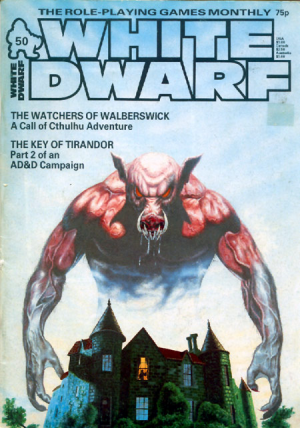
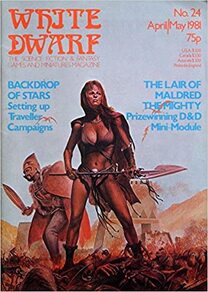


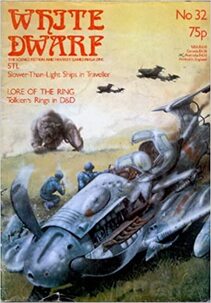











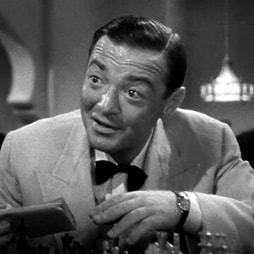










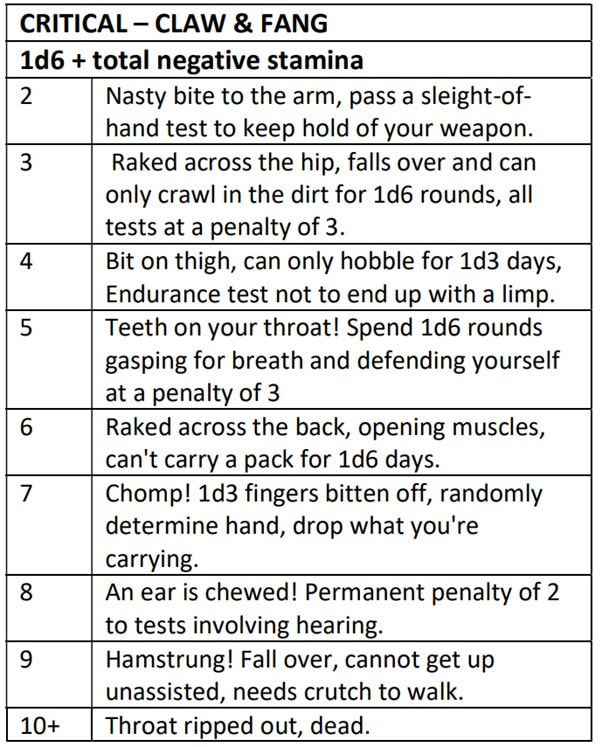
















 RSS Feed
RSS Feed


